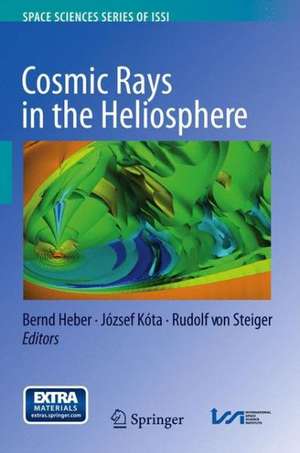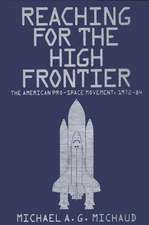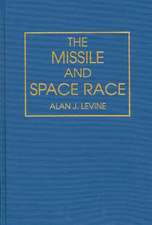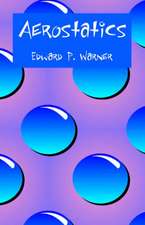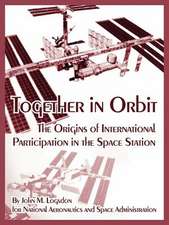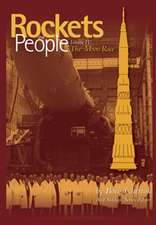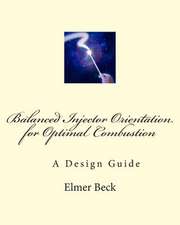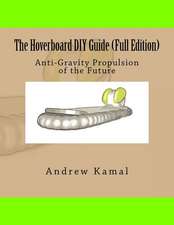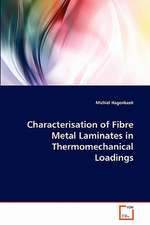Cosmic Rays in the Heliosphere: Temporal and Spatial Variations: Space Sciences Series of ISSI, cartea 43
Editat de Bernd Heber, József Kóta, Rudolf Steigeren Limba Engleză Hardback – 26 aug 2013
Leading scientists in the field assess the current state of our understanding of the spatial and temporal variations of galactic and anomalous cosmic rays in the Heliosphere, and their relation to effects of the Sun. The main objective is to understand the spatial and temporal variation of galactic and anomalous cosmic rays in the light of recent observations, theory and modeling by identifying the key mechanism(s) of cosmic ray modulation and how changes on the Sun relate to changes in the observed characteristics of cosmic rays in the Heliosphere; examining the current long-lasting solar minimum and understand its implications for solar-cycle variations and long-term variations; and interpreting the long-term variations of cosmogenic radionuclides in terms of solar variability and climate change on Earth.
This volume is aimed at graduate students active in the fields of solar physics, space science, and cosmic ray physics.
Originally published in Space Science Reviews journal, Vol. 176/1-4, 2013.
| Toate formatele și edițiile | Preț | Express |
|---|---|---|
| Paperback (1) | 646.11 lei 6-8 săpt. | |
| Springer – 27 aug 2015 | 646.11 lei 6-8 săpt. | |
| Hardback (1) | 650.69 lei 6-8 săpt. | |
| Springer – 26 aug 2013 | 650.69 lei 6-8 săpt. |
Din seria Space Sciences Series of ISSI
- 15%
 Preț: 654.30 lei
Preț: 654.30 lei - 18%
 Preț: 1019.49 lei
Preț: 1019.49 lei - 15%
 Preț: 647.27 lei
Preț: 647.27 lei - 18%
 Preț: 959.50 lei
Preț: 959.50 lei - 18%
 Preț: 1406.98 lei
Preț: 1406.98 lei - 18%
 Preț: 904.91 lei
Preț: 904.91 lei - 18%
 Preț: 1123.35 lei
Preț: 1123.35 lei - 18%
 Preț: 908.36 lei
Preț: 908.36 lei - 18%
 Preț: 903.93 lei
Preț: 903.93 lei - 20%
 Preț: 577.35 lei
Preț: 577.35 lei - 18%
 Preț: 1115.46 lei
Preț: 1115.46 lei - 18%
 Preț: 1009.70 lei
Preț: 1009.70 lei - 18%
 Preț: 796.61 lei
Preț: 796.61 lei - 18%
 Preț: 739.81 lei
Preț: 739.81 lei - 18%
 Preț: 899.21 lei
Preț: 899.21 lei - 18%
 Preț: 1126.52 lei
Preț: 1126.52 lei - 18%
 Preț: 1016.01 lei
Preț: 1016.01 lei - 18%
 Preț: 1398.80 lei
Preț: 1398.80 lei - 15%
 Preț: 545.15 lei
Preț: 545.15 lei -
 Preț: 436.35 lei
Preț: 436.35 lei -
 Preț: 430.59 lei
Preț: 430.59 lei - 18%
 Preț: 983.65 lei
Preț: 983.65 lei -
 Preț: 412.78 lei
Preț: 412.78 lei - 18%
 Preț: 956.50 lei
Preț: 956.50 lei - 18%
 Preț: 950.52 lei
Preț: 950.52 lei - 18%
 Preț: 951.29 lei
Preț: 951.29 lei - 24%
 Preț: 1060.10 lei
Preț: 1060.10 lei - 18%
 Preț: 958.88 lei
Preț: 958.88 lei - 24%
 Preț: 788.94 lei
Preț: 788.94 lei - 15%
 Preț: 707.00 lei
Preț: 707.00 lei - 18%
 Preț: 951.59 lei
Preț: 951.59 lei - 24%
 Preț: 1052.14 lei
Preț: 1052.14 lei - 20%
 Preț: 574.08 lei
Preț: 574.08 lei - 18%
 Preț: 964.10 lei
Preț: 964.10 lei - 15%
 Preț: 647.40 lei
Preț: 647.40 lei - 18%
 Preț: 961.55 lei
Preț: 961.55 lei - 18%
 Preț: 964.23 lei
Preț: 964.23 lei
Preț: 650.69 lei
Preț vechi: 765.51 lei
-15% Nou
Puncte Express: 976
Preț estimativ în valută:
124.51€ • 130.26$ • 103.43£
124.51€ • 130.26$ • 103.43£
Carte tipărită la comandă
Livrare economică 02-16 aprilie
Preluare comenzi: 021 569.72.76
Specificații
ISBN-13: 9781461491996
ISBN-10: 1461491991
Pagini: 412
Ilustrații: VI, 403 p.
Dimensiuni: 155 x 235 x 28 mm
Greutate: 0.7 kg
Ediția:2014
Editura: Springer
Colecția Springer
Seria Space Sciences Series of ISSI
Locul publicării:New York, NY, United States
ISBN-10: 1461491991
Pagini: 412
Ilustrații: VI, 403 p.
Dimensiuni: 155 x 235 x 28 mm
Greutate: 0.7 kg
Ediția:2014
Editura: Springer
Colecția Springer
Seria Space Sciences Series of ISSI
Locul publicării:New York, NY, United States
Public țintă
ResearchCuprins
From the Contents: Solar Drivers of 11-yr and Long-Term Cosmic Ray Modulation.- Time-Variability in the Interstellar Boundary Conditions of the Heliosphere: Effect of the Solar Journey on the Galactic Cosmic Ray Flux at Earth.- Cosmic-Ray Energy Spectra and Time Variations in the Local Interstellar Medium: Constraints and Uncertainties.
Notă biografică
Dr. Bernd Heber is a full professor (W2) at the Institute for Experimental and Applied Physics of the Christian-Albrechts-Universität of Kiel, Germany. He has expertise in cosmic ray transport, as well as in the analysis and interpretation of energetic particle data acquired by spacecraft (Helios, Ulysses, SOHO, STEREO, Pioneer, Voyager) instrumentation. He has investigated a broad range of problems relating to energetic particles in space, including solar and galactic cosmic ray propagation, shock processes, and the modulation of galactic cosmic rays as well as the cosmic ray interaction with the Earth atmosphere. His research interests also cover the development and optimization of new space instrumentation. He is the PI for energetic particle detectors on Ulysses, SOHO, and STEREO. He is and has been involved in the project studies for POEMS, Interstellar Probe, the Interstellar Heliopause Explorer, the Solar Orbiter and Juice mission.
Dr. József Kóta is Senior Research Scientist at the Lunar and Planetary Laboratory of the University of Arizona (Tucson, Arizona, USA). Previously he was at the Central Research Institute for Physics of the Hungarian Academy of Sciences. Dr. Kóta’s research interest is centered around energetic particles, solar wind, and magnetic fields in the Heliosphere. He conducts theoretical and numerical studies on galactic and anomalous cosmic rays, as well as fast neutral atoms (ENAs), which offer a unique tool to probe the remote areas of the heliosphere. He has developed a number of numerical codes to model the transport and acceleration of cosmic rays in the interplanetary magnetic field. He conducted theoretical research to understand the anisotropies of cosmic rays. He has been involved in modeling space weather in the Earth’s environment. The aim of his research is to understand, model, and forecast large solar energetic particle (SEP) events; to understand the mechanism how Coronal Mass Ejections drive a shockand accelerate ions to high (often relativistic) energies. He authored or co-authored ~100 articles in scientific journals. He was Guest Investigator at the Ulysses, Voyager and IBEX Missions. He was one of the co-conveners of the ISSI Workshop "Cosmic Rays in the Heliosphere II".
Dr. Rudolf von Steiger is the director of the International Space Science Institute in Bern, Switzerland. His research is primarily about the solar wind, mainly using data from SWICS on Ulysses. He also lectures at the University of Bern, where he earned his PhD in experimental physics in 1988.
Dr. József Kóta is Senior Research Scientist at the Lunar and Planetary Laboratory of the University of Arizona (Tucson, Arizona, USA). Previously he was at the Central Research Institute for Physics of the Hungarian Academy of Sciences. Dr. Kóta’s research interest is centered around energetic particles, solar wind, and magnetic fields in the Heliosphere. He conducts theoretical and numerical studies on galactic and anomalous cosmic rays, as well as fast neutral atoms (ENAs), which offer a unique tool to probe the remote areas of the heliosphere. He has developed a number of numerical codes to model the transport and acceleration of cosmic rays in the interplanetary magnetic field. He conducted theoretical research to understand the anisotropies of cosmic rays. He has been involved in modeling space weather in the Earth’s environment. The aim of his research is to understand, model, and forecast large solar energetic particle (SEP) events; to understand the mechanism how Coronal Mass Ejections drive a shockand accelerate ions to high (often relativistic) energies. He authored or co-authored ~100 articles in scientific journals. He was Guest Investigator at the Ulysses, Voyager and IBEX Missions. He was one of the co-conveners of the ISSI Workshop "Cosmic Rays in the Heliosphere II".
Dr. Rudolf von Steiger is the director of the International Space Science Institute in Bern, Switzerland. His research is primarily about the solar wind, mainly using data from SWICS on Ulysses. He also lectures at the University of Bern, where he earned his PhD in experimental physics in 1988.
Textul de pe ultima copertă
Leading scientists in the field assess the current state of our understanding of the spatial and temporal variations of galactic and anomalous cosmic rays in the Heliosphere, and their relation to effects of the Sun. The main objective is to understand the spatial and temporal variation of galactic and anomalous cosmic rays in the light of recent observations, theory and modeling by identifying the key mechanism(s) of cosmic ray modulation and how changes on the Sun relate to changes in the observed characteristics of cosmic rays in the Heliosphere; examining the current long-lasting solar minimum and understand its implications for solar-cycle variations and long-term variations; and interpreting the long-term variations of cosmogenic radionuclides in terms of solar variability and climate change on Earth.
This volume is aimed at graduate students active in the fields of solar physics, space science, and cosmic ray physics.
Originally published in Space Science Reviews journal, Vol. 176/1-4, 2013.
This volume is aimed at graduate students active in the fields of solar physics, space science, and cosmic ray physics.
Originally published in Space Science Reviews journal, Vol. 176/1-4, 2013.
Caracteristici
Presents a comprehensive synopsis of the current state of cosmic rays, their modulation and their effects in the Earth’s atmosphere Identifies the key mechanisms of cosmic ray modulation and how changes on the Sun relate to changes in the observed characteristics in the Heliosphere Examines the current long-lasting solar minimum and its implications for solar-cycle variations and long-term variations
